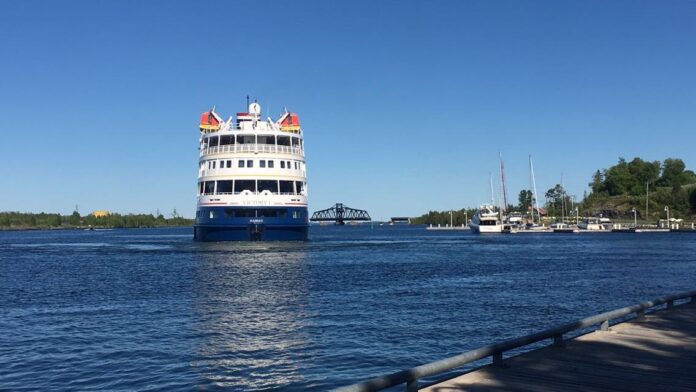SILVER WATER—Purvis Fisheries of Silver Water has joined over 20 other companies in signing a “100 percent Great Lakes Fish Pledge,” a first-of-its kind international effort to publicly commit to productively using 100 percent of commercially caught Great Lakes fish by 2025.
“This is a great idea,” stated Drew Purvis of Purvis Fisheries. He pointed out “our fish offal goes to Mike Meeker to use as fertilizer (Meeker’s Magic Mix).”
“In most cases, only about 40 percent of a fish is used (fillet for consumption), but experts from Iceland have found a way to use the remaining 60 percent for a variety of non-consumption commercial uses,” said Craig Clark of Clark Communications.
“As members of the Commercial Fisheries of Ontario, we have been working on getting a company from Ireland to develop a use for the remaining parts of the fish (non-consumption) using all the byproducts of the fish,” said George Purvis, president of Purvis Fisheries. “This company came to our conference last summer and developed the concept for the program.”
The campaign seeks to identify uses for all parts of the fish and to foster collaboration between processors, producers, and other fishery-adjacent businesses to explore and implement innovative applications for fish byproducts. Such applications include protein, marine collagen, fertilizer, leather and other new, high-value products. Campaign partners include the Iceland Ocean Cluster which pioneered the 100 per cent fish concept by developing such products made from the Icelandic cod. The goal of this pledge is to achieve 100 per cent utilization of each fish caught in the region by 2025.
The Great Lakes are home to a sizeable commercial fishery for diverse populations such as lake whitefish, yellow perch, walleye and lake trout. In most cases, only the fillets of these fish are eaten by people, while the remaining 60 percent of the fish is relegated to inexpensive animal feed or discarded. Recognizing the need to prevent waste and promote the sustainable use of these fish, the Great Lakes St. Lawrence Governors and Premiers (GSGP) initiated the 100 per cent Great Lakes Fish campaign.
“One of the ideas they have is to make leather out of the skin on the fish,” said Drew Purvis. “They’ve developed several products, like leather, collagen, proteins and others. They are trying to add more value for each fish. And in Iceland they have a plant to carry all of this out. And they are thinking of getting Canada to invest in this type of plant, I understand there might be one in Newfoundland.”
Mr. Clark said estimates have shown that the value of one fish could jump from $16 to $6,800 Canadian with this concept.
“We are thrilled to have Purvis Fisheries sign on to the Pledge,” David Naftzger, GSGP executive director said. “The success of this initiative is dependent on participation by participants in the fishing industry. Commitments from those who gather and process the fish caught in our lakes are essential to making the 100 percent Great Lakes Fish vision a reality.”
“As a family owned and operated business with a storied history now in our fifth generation, we truly understand the importance of sustainable harvest practices,” said George Purvis. “By signing this pledge and joining this initiative, we continue our family’s legacy of protecting Lake Huron’s fisheries for the next generations.”
With a history of commercial fishing going back to 1882, Purvis Fisheries now operates a dock-side plant housing several modern processing machines which allows Purvis to maximize quality and minimize waste. The dock-side location provides Purvis the ability to process catches immediately after its boats unload their catch, retaining as much freshness as possible.
The project’s goal is to demonstrate how 100 percent of commercially caught fish from the Great Lakes can be used for different purposes and beyond just food. The initial focus is on whitefish followed by other Great Lakes fish such as yellow perch, walleye, lake trout and white sucker. A 100 percent Great Lakes fish strategy hold tremendous promise for the Great Lakes-St. Lawrence region to more completely utilize caught fish, drive greater economic returns, create jobs and help develop rural economies.





